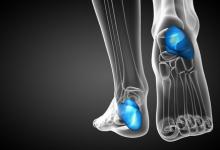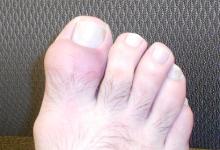Is DAS28 and HAQ-DI Headed for the Graveyard? Save

Dr. Joseph Smolen delivered one of the most elegant and informative talk on rheumatoid arthritis (RA) at this ACR’s meeting as a tribute to Dr. Paul Klemperer.
The purpose of the Paul Klemperer Memorial Lecture is to highlight significant developments in the area of translational and clinical rheumatology and to make us think. With his presentation, Dr. Smolen leads us on a journey: he started with a stroll into the historical discoveries of RA from the pathophysiology of the disease to the struggles of finding effective therapies. Next, he recounts how important and urgent the search was to develop tools to assess RA disease activity because quantifying disease activity was necessary to assess efficacy of therapy. This was the birth of treat to target (T2T); it elevated the standards of care by measuring disease activity scores (DAS) and evaluating health assessment questionnaire disability indices (HAQ-DI). The tools were designed to guide clinicians in their decisions to adjust therapy with the goal of disease remission.
He had us feeling content with what we are doing in practice as we walked with him through new drug development. Then Dr. Smolen did the unthinkable: he made us crash!
Yes, he stated, “the DAS28 score is obsolete” and to add insult to injury, he noted that the HAQ-DI should not be part of the disease activity scores. There were so many people shifting in their seats, looking around as if they could not believe what they heard. Everyone held their breath. Did he lose his mind, or were we all misguided? The answer is neither.
What happened was with the newer drugs, the old ways of doing things need to be updated. In his clinic, over the last 20 years, remission rates increased based on DAS, but discordantly, 25-30% of patients still had persistently active disease; in addition, several studies published that there were high DAS28 remission numbers with certain drugs but lower numbers of ACR50 and ACR70 [1,2]. How can this be? He noted that the DAS relies heavily on acute phase reactants in its calculations. With the newer therapies that block IL-6, the downstream acute phase reactants are inhibited, and DAS scores are decreased regardless of whether or not patients had a response to drug.
Ok so that makes sense, but what about the HAQ-DI—why throw the baby out with the bath water? Here is the problem with the HAQ-DI as it stands: this tool measures overall functional impairment but does not distinguish between reversible impairment due to active inflammation from irreversible impairment due to damage and comorbities [2]. He cited that improvement of HAQ-DI decrease with increasing joint damage [3]. So a patient with early RA with multiple joints tender and swollen without radiographic damage can go from a high HAQ-DI score to a low one, but a patient who has longstanding crippling deformities without synovitis can never go back to normal function—the HAQ-DI will always remain elevated.
Is this the end of the road for the DAS and HAQ-DI?
Dr. Smolen noted that we may need to modify how we measure disease activity. The Clinical Disease Activity Index (CDAI) is what he suggests we use. If you recall, the CDAI includes everything in the DAS minus the acute phase reactant (ESR or CRP), but also it incorporates the physician global. The CDAI was developed so that clinicians do not have to wait on labs to calculate disease activity in their patients. With regards to the HAQ-DI, he stated that it should be renamed the DAM-HAQ (damage index)—and to be honest with you, the audience thought he was cursing at that moment but then I looked onto the screen and realized that it was a terminology coined for damage index.
The lecture has indeed been an incredible journey; this is not the end of the road for the DAS or the HAQ. A tune-up is all they need.
References
1. Smolen JS, Aletaha D. Interleukin-6 receptor inhibition with tocilizumab and attainment of disease remission in rheumatoid arthritis: the role of acute-phase reactants. Arthritis Rheum. 2011 Jan;63(1):43-52. doi: 10.1002/art.27740.
2. M. Schoels, Alasti, J Smolen, and D. Aletaha. Evaluation of newly proposed remission cut-points for disease activity score in 28 joints (DAS28) in rheumatoid arthritis patients upon IL-6 pathway inhibition. Arthritis Res Ther. 2017; 19: 155.
3. Aletaha D, Smolen J, Ward MM. Measuring function in rheumatoid arthritis: Identifying reversible and irreversible components. Arthritis Rheum. 2006 Sep;54(9):2784-92.
4. Kerschbaumer A et al. The effects of structural damage on functional disability in psoriatic arthritis Ann Rheum Dis. 2017 Dec;76(12):2038-2045. doi: 10.1136/annrheumdis-2017-211433.







If you are a health practitioner, you may Login/Register to comment.
Due to the nature of these comment forums, only health practitioners are allowed to comment at this time.